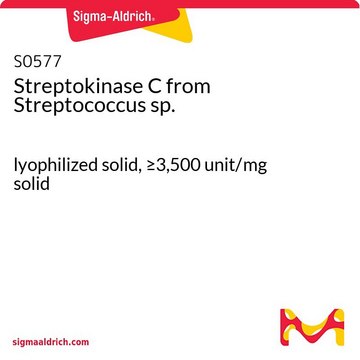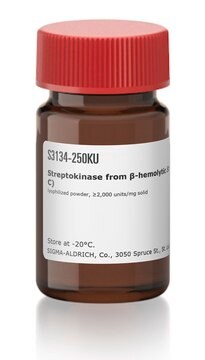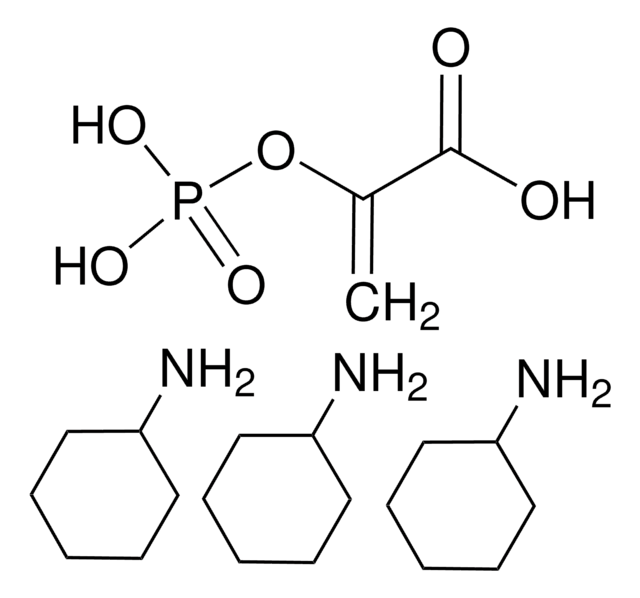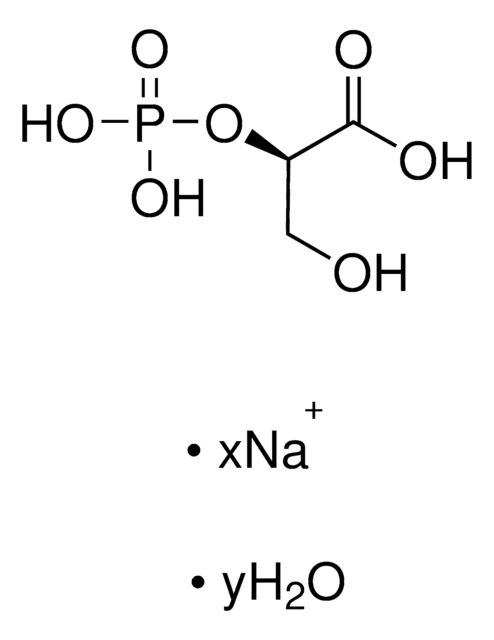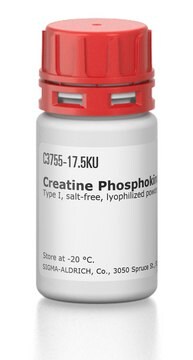S0827
Streptokinase C from Streptococcus sp.
buffered aqueous solution, ≥50,000 units/mg protein
Sign Into View Organizational & Contract Pricing
All Photos(1)
About This Item
Recommended Products
recombinant
expressed in E. coli
Quality Level
form
buffered aqueous solution
specific activity
≥50,000 units/mg protein
storage temp.
−20°C
Looking for similar products? Visit Product Comparison Guide
Application
Streptokinase (SK) is commonly used as a thrombolytic agent in the therapy of ischemic stroke. This therapy carries the important risk of intracerebral hemorrhage. Streptokinase is also used in the treatment of complicated parapneumonic effusions and empyema where adverse reactions, allergic type, are rare. The product has been used to measure SK activity in brain heart infusion culture supernatant fluids of the various wild-type and mutant strains of Streptococcus dysgalactiae subsp. Equisimilis.
Biochem/physiol Actions
Streptokinase C is an extracellular enzyme that is produced by various strains of β-hemolytic streptococci. It is a single-chain polypeptide that exerts its fibrinolytic action indirectly by activating the circulatory plasminogen.
Unit Definition
One unit will liquify a standard clot of fibrinogen, plasminogen, and thrombin at pH 7.5 at 37 °C in 10 min.
Physical form
Supplied as a frozen solution containing 60 mM phosphate buffer and 0.6 M glutamate. Albumin-free
Storage Class
10 - Combustible liquids
wgk_germany
WGK 3
flash_point_f
Not applicable
flash_point_c
Not applicable
Certificates of Analysis (COA)
Search for Certificates of Analysis (COA) by entering the products Lot/Batch Number. Lot and Batch Numbers can be found on a product’s label following the words ‘Lot’ or ‘Batch’.
Already Own This Product?
Find documentation for the products that you have recently purchased in the Document Library.
Kerstin Steiner et al.
Infection and immunity, 70(7), 3627-3636 (2002-06-18)
Synthesis of the plasminogen activator streptokinase (SK) by group A streptococci (GAS) has recently been shown to be subject to control by two two-component regulators, covRS (or csrRS) and fasBCA. In independent studies, response regulator CovR proved to act as
Our team of scientists has experience in all areas of research including Life Science, Material Science, Chemical Synthesis, Chromatography, Analytical and many others.
Contact Technical Service